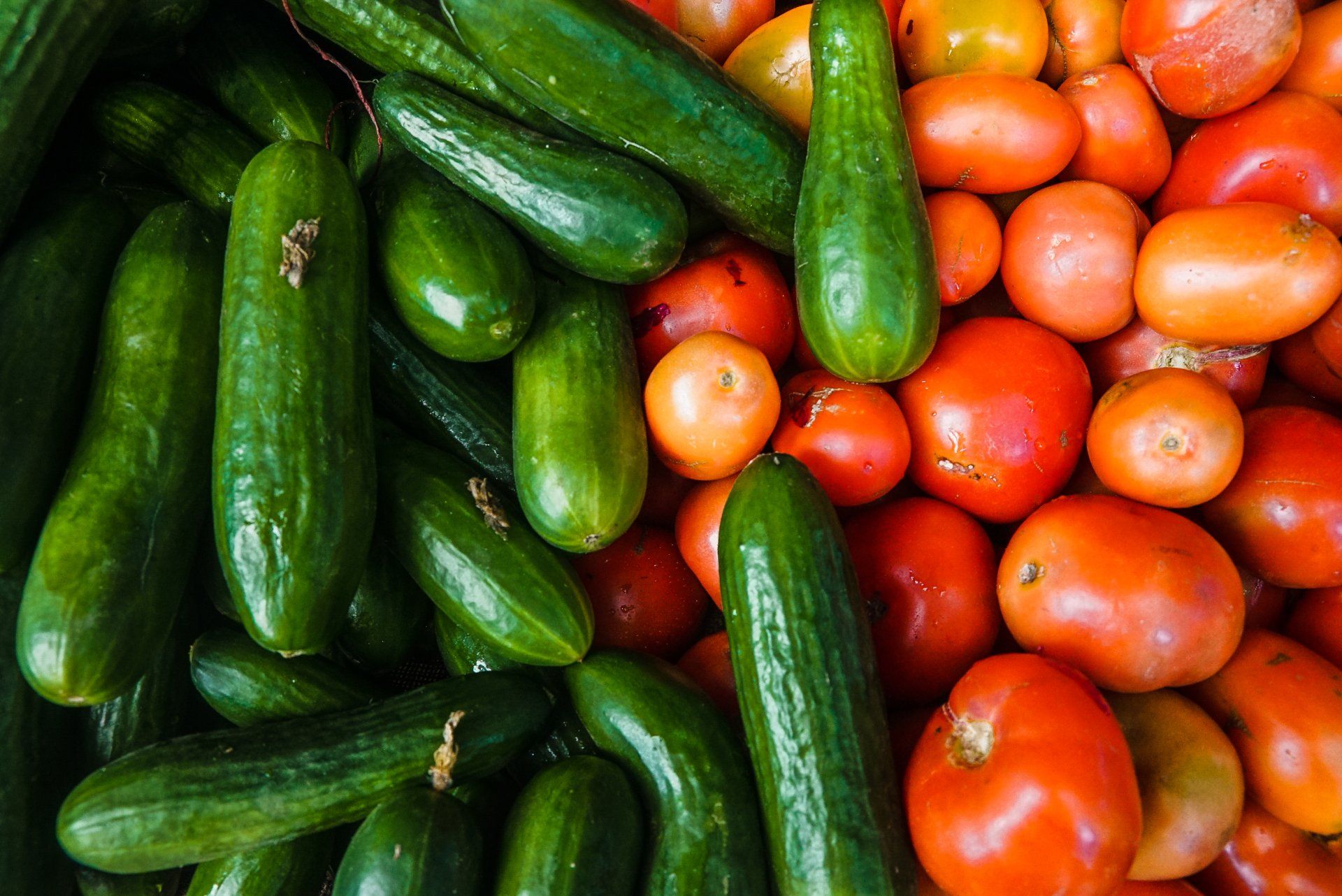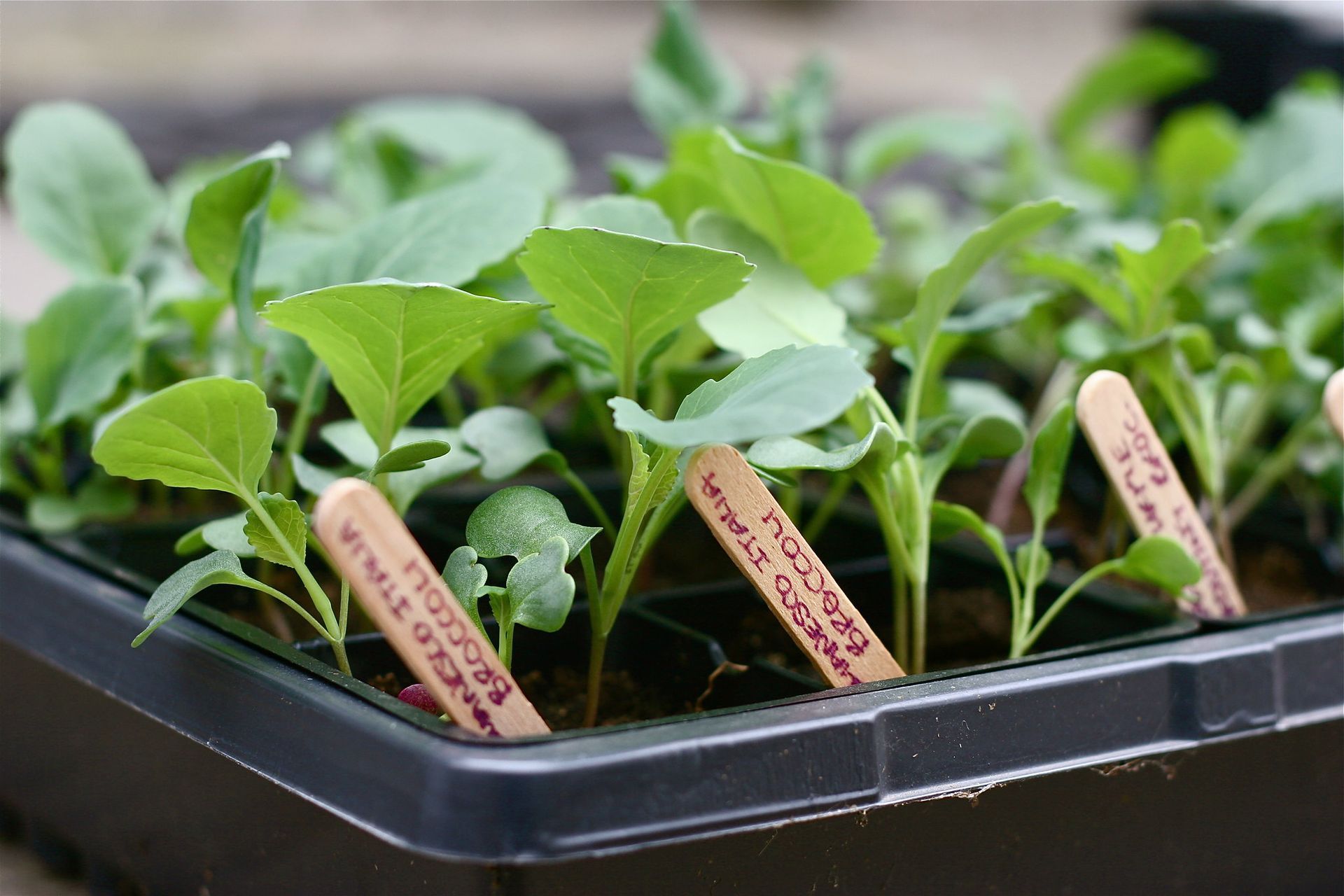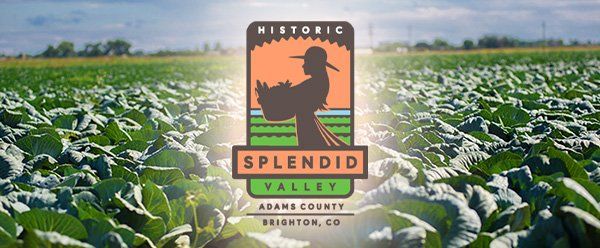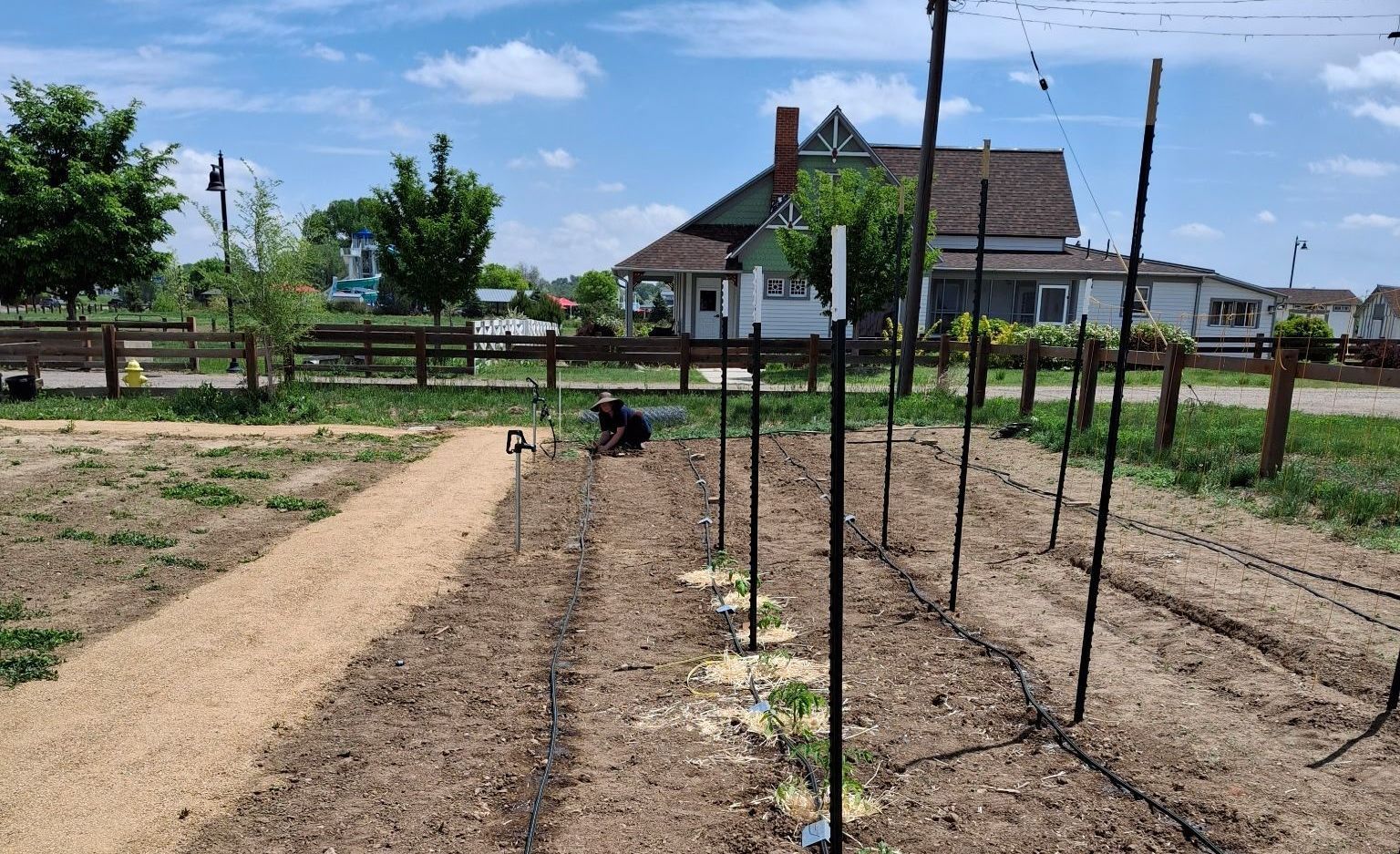Harvest News
Newsletters, articles, and agricultural events from around Brighton
BSTH grew and donated nearly 30 varieties of edible plants for this year's Summer Fest. If you need more growing and care information about a plant you received from us, please check out the links below. A big shout out to Botanical Interest for providing seeds this year. Also a thank you to Julia and Cheryl for starting so many of this year's plants for us! Tomatoes Patio Choice Cherry Falls Brandywine Money Maker Roma San Marzano Beefsteak Glacier Oxheart Cherokee Purple Ace Tomatillos Grande Rio Verde Peppers Serrano Shishito Poblano / Ancho Early Jalape ñ o California Wonder Herbs Flat-leaf Parsley Common Oregano English Thyme Broadleaf Sage Garlic Chive Common Chive Lemon Balm Savory Marjoram Basil - mixed varieties

We hope you enjoy your new plant! These plants are ready for your container or garden, and have already been hardened off (made ready for outdoor life). As with all our plants and seeds, if you find yourself with an abundance of produce, we strongly encourage you to share with those you know who may be experiencing food insecurity, or consider donating to local food banks in the area. Below are links for each variety of vegetable that contain additional information about planting, harvesting, and general tips-and-tricks. A special thank you to Cheryl Watson, for growing a portion of these tomatoes. Tomatoes Ace Supersteak Beefsteak Honeycomb 4th of July Italian Roma Baby Boomer Cucumbers Garden Sweet Straight Eight Bush Champion Picklebush Peppers Jalapeño Santaka Habanero Carnival Bell Pepper Agriculturally, Andrew

I’d like to start with a heart-filled thank you for believing in Brighton Shares The Harvest. When Linda and I spoke about the importance of citizen run organizations like this one and the level of impact it holds, it was your words of support that told us something had to be done to hold that flame aloft. So here we are! In the 2023 growing season with a reverence for what came before us, determination for what is in front of us, and hope for what will come after us. During this year, we’ll be working to put together a few classes, on food preservation, seed saving and ways to get a head start on next year’s harvest. I’ve been told from no small amount of all of you that receiving free seeds was a highlight for each season, so we will continue looking for ways to bring you more seeds!

Article Originally published in The Brighton Connection https://brightonco.gov/279/City-Media We are coming up on five years since the approval of the District Plan, a plan adopted in 2016 by both the City and Adams County focused on the south Brighton agricultural area, Historic Splendid Valley. This award-winning plan was put together in response to ongoing public support for preserving valuable farmland and heritage, building on policies laid out in previous land use and open space plans spanning more than 20 years. The many action items in the District Plan fall under one of three overarching goals: Preserve agricultural land Encourage local food production & consumption Promote agritourism Historic Splendid Valley is home to acres of land designated by the United States Department of Agriculture as prime farmland. This is land that has been farmed for decades and continues to produce vegetables, fruits, nursery crops, and other products for local consumption and distribution regionally and nationally. While farmland is being lost at alarming rates across the country, the City and Adams County have recognized the benefits of preserving these lands locally. These benefits include access to fresh, locally-grown fruits and vegetables, realizing our vision of a standalone city surrounded by open space and farmland, and tourism related to visiting some of our local farms. Since the adoption of the District Plan approximately 264 acres of land have been preserved with their associated water rights. That brings the total farmland preserved in Historic Splendid Valley to about 445 acres. This is made up of both acquired lands that the City leases to local farmers, and privately-owned properties protected through conservation easements ( see our toolkit about conservation easements ). Competitive grants and key partnerships have made these successes possible, helping to ensure that our heritage and community values are reflected into the future. To learn more about Historic Splendid Valley and the implementation of the District Plan, you can visit brightonco.gov/SplendidValley .
One of the silver linings from 2020 is that a lot of families started gardening, growing food and flowers, and a lot of them did it by planting seeds. Planting from seed has several advantages over buying potted plants that are garden-ready, including lower price, wider variety, and the ability to swap seeds with gardening friends. There are many vegetables that you can grow by planting seeds directly in the garden, or into outside containers, at the right time of year. These dates are not hard and fast, they depend on the weather, but as a guideline: Up through early May you can plant arugula, beets, carrots, Swiss Chard, lettuce, spinach, kale, cabbage, pak choy, mustard greens, and radishes. Seed packets will give you more information about when to plant, how deep, how far to space the seeds, etc.. Quick growing greens such as lettuce, spinach, and kale, can be cut when small for fresh salads and they’ll regrow to be cut again. In late May or early June, you can plant beans, cantaloupe, summer and winter squash, pumpkins, cucumbers, and most herbs, including basil and cilantro. These plants need warm soil to thrive, so resist the temptation to plant too early. Brighton Shares The Harvest is a Nonprofit that works with local gardeners to grow food for their families and for sharing. We have established a partnership with a local seed company, Botanical Interests: they will give us a rebate on all online seed orders that go through our website. To shop, simply go to www.BrightonSharesTheHarvest.org and click on the Botanical Interests Shop Now banner (scroll down; it’s on the left side). This takes you to their website where you can browse and shop for organic, heirloom, and hybrid vegetable and flower seeds. If you have questions about this rebate program with Botanical Interests, please contact Linda Young, Executive Director of Brighton Shares The Harvest, at Linda@BrightonSharesTheHarvest.org or on 720-301-0949. Grow something!
Does meal time become a battle when it's time for your kids to eat fruits and vegetables? For many households, it does! Luckily, there are many ways to diffuse the tension at meal time while still getting your kids the fruits and vegetables that they need. Most mealtime battles happen because kids want control over their meal options. By implementing a few changes, you can give kids the "control" they crave and makes meal time more enjoyable. 1. Give your kids a choice between two options. For example, ask your kids if they would like carrots or peas for dinner. If they throw a fit, gently remind them that they chose the vegetable for tonight. 2. Involve your kids in the meal planning process. Kids are more likely to eat a meal that they helped plan and create. Depending on your child's age, kids can be involved in several different ways. For younger kids, ask them to help measure out the frozen peas or shuck the corn. For older kids, ask for help finding recipes and making the shopping list. 3. Try new fruits and vegetables. The supermarkets are stocked with a large variety of fruits and vegetables. Allow your kids to pick our a new fruit or vegetable (fresh, frozen, or canned) at the store for the whole family to try. Some stores may provide you with a sample if you ask the produce clerk. 4. Serve fruits and vegetables in a variety of new ways. Your child may not like canned green beans but they may love steamed green beans. Encourage your child to try a certain fruit and vegetable prepared in new ways before deciding that food is not for them. 5. Allow your child to not eat fruits or vegetables that they don't enjoy. Everyone has foods that they do not like and its okay for your child to dislike some fruits and vegetables. When your child expresses a dislike for a food, have them describe it and what they do not like about a food. Is it too sweet, too sour, or bitter? By identifying what they do not like about the food, it will help both of you understand more about taste preferences and keep them from just saying "Yuck, this is gross!" 6. Be a good role model. Kids learn by watching behaviors of adults during mealtimes. If you implement new processes, be sure that you stick to them, too! Hannah Murphy, RD, CNSC Platte Valley Medical Center
As a Nonprofit that’s all about connecting people to fresh produce, we usually write and talk about ways to get more produce into your daily diets. We aren’t encouraging people to become vegetarians or vegans, just to eat more fresh produce. But we’re all going to be hearing a lot more, from a variety of sources, about why you should also consider eating less meat, and it’s not all about your health. It’s about the health of the planet as well. 5280 Magazine (5280.com) has an article in the September 2019 issue called “Meat Matters” about the practice of regenerative agriculture, a way of grazing grass-fed animals that is better for the animals and much better for the land, and meat from these animals is better for your health. If you’re one of those people, as I am, who prefers not to think about feedlots and commercial slaughterhouses, you might want to learn about how those practices impact the environment (manure pollution of waterways, as just one example), and what the true cost of cheap meat is to you, the animals, and the environment. What’s a responsible consumer to do, especially working families that cannot afford to pay $26 for a chicken? Educate yourself on where your food comes from, and how the meat you’re buying was raised. Consider trying some of the new plant-based meat substitutes (we’ll all be hearing more about those, too). This is not without controversy; you can read about a new “Better with Beef” campaign: www.journal-advocate.com/2019/09/04/colorado-beef-industry-launches-education-campaign/ . Beef is a major industry in Colorado, and it’s definitely possible to find beef that has been raised responsibly. Colorado has a beef council: www.cobeef.com . While you chew on all of this info, we encourage you to continue to include fresh fruits and vegetables in your meals and snacks. Dried beans, while technically not “fresh” produce, are minimally processed, and are an excellent source of very affordable protein; they can be cooked and used as a main ingredient or a minor player in salads, soups, stews, casseroles, burritos, and many more dishes. Dry beans are easy to cook and you can find numerous recipes online. Our website, www.BrightonSharesTheHarvest.org , has additional information about how you can access, or share, fresh healthy produce, including additional nutrition resources under the Get Produce tab. For additional questions about our services, please contact our Director, Linda Young, at 720-301-0949 or Linda@BrightonSharesTheHarvest.org.
“Self Care” is a term we hear a lot these days. The concept is very basic: no matter what you do, what many roles you may perform in your life, you must take care of yourself or you won’t be able to do anything well. We know that we need nutrients for our bodies to perform, to even keep us alive. Nutrition can be complex and confusing, with new information coming at us all the time. While it may be fascinating to some, it is overwhelming to many of us, so we just ignore it. While we recognize the signals from our stomach when it’s empty, and we feel hungry, it’s not as easy to recognize the signals from our body that we aren’t getting enough of the nutrients we need to stay healthy and strong. Just as our stomach needs to be refilled throughout the day, our bodies need to be refueled regularly. The recommended 5 – 9 daily servings of vegetables and fruits will help you get those nutrients, but it’s not always easy to accomplish. You don’t have to make it complicated, you don’t even need recipes. There are lots of fresh fruits and vegetables that don’t require much preparation, just washing, maybe slicing, that can easily be added to meals and be served as snacks. Even canned or frozen vegetables added to a meal will provide some much needed nutrition, with very little cost or effort. One of the easiest ways to make sure you’re getting a lot of nutrients is to eat a variety of fresh produce, different colors, and more vegetables than fruit. Fresher is better, so look for produce that is in season and grown locally, as nutrients diminish over time, but any healthy produce added to your diet will benefit your body. Our website, www.BrightonSharesTheHarvest.org , has additional information about how you can access, or share, fresh healthy produce, including additional nutrition resources under the Get Produce tab. For additional questions about our services, please contact our Director, Linda Young, at 720-301-0949 or Linda@BrightonSharesTheHarvest.org.


